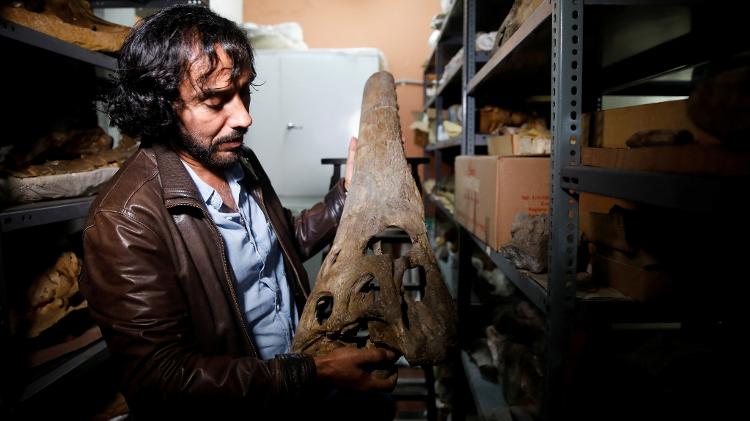The discovery of a 7-million-year-old prehistoric crocodile fossil in Peru has given paleontologists more clues as to how modern crocodiles, all freshwater creatures in the Andean country, first came to land from the sea.
The animal would likely have crossed the Atlantic Ocean to reach the coast of South America and then settle in what is now southern Peru, according to a Peruvian research team who analyzed the species’ jaw and skull remains.
Researcher Rodolfo Salas said his team has been collecting partial skeletons of this species in recent years and, after finding a jawbone in Peru’s Sacaco Desert in 2020, they understood that these animals evolved after living in salt water.
“The new crocodile species we introduced to the world lived in Sacaco 7 million years ago,” Salas said of the species he named Sacacosuchus cordovai. The crocodile’s ancestor would have been four meters long, he added.
Other skeletons of prehistoric animals have already been found in Sacaco. Experts say that millions of years ago, the desert was a seafloor inhabited by whales, giant sharks and crocodiles, among other marine species.
In March, a team of paleontologists led by Salas presented the 12-metre-long “sea monster” fossil skull, a predator that lived 36 million years ago in an ancient ocean off the central coast of Peru.
source: Noticias
